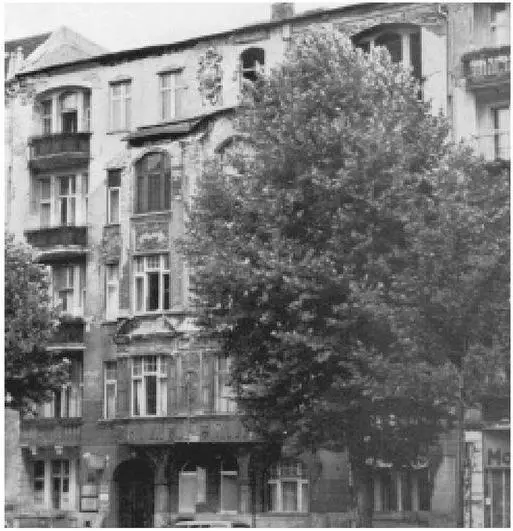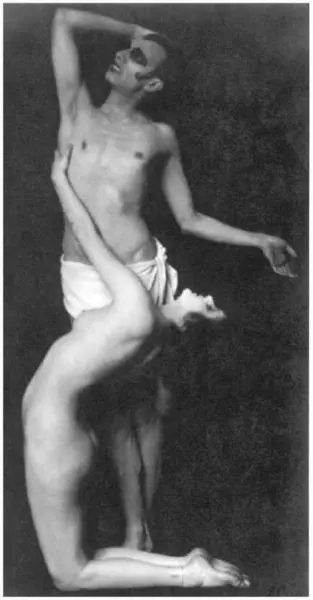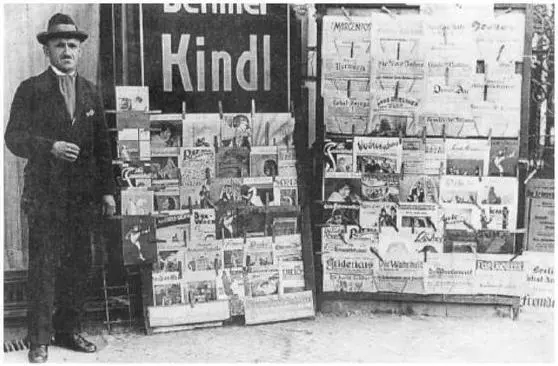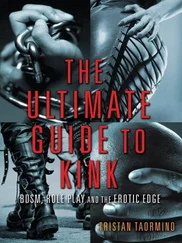Unusual:For many of Sing-Sing’s regulars, the bar brings back nostalgic memories of their bittersweet years in the pen. The unpredictable and nasty-tempered Spanner, the resentful waiters, even the poorly prepared menu, the gaffed games, counterfeit money, and strange companionship all hark back to a simpler, if more difficult, environment. Police occasionally collar petty criminals here, especially those with well-connected rivals or loser types who are just plain homesick for authentic institutional living.
ARYAN CAFÉ
Dragonerstrasse 10
1933-1934
Area:BERLIN NORTH. (Formerly the site of the CAFÉ PARIS.)
Atmosphere:Outside building—creepy, perverse, secretive. Brusque Spanner with a bulldog face and huge scar on right cheek scrutinizes potential customers. Those selected must then negotiate several doors inside a hallway until they enter a tiny booth, where a black man questions them through a peephole. Inside: perverse, carefree, saturated with the smells of cigar smoke, imported liquor, expensive perfumes, facial creams, sweat, and strong disinfectant.
Clientele:Men in tuxedos, Minettes , stylish Nuttes , smugglers, crime bosses and other underworld types.
Decor:A cocktail lounge in front for “business,” leading to a huge banquet room. Displayed on the wall there are erotic drawings (grossly detailed renditions of heterosexual and gay copulation) and pornographic photographs, which are separated by Prussian blue drapes. Each framed picture hangs loosely from the ceiling and, when moved, reveals a peephole to one of three naked cabarets.
Entertainment:For 20 American dollars, visitors have unlimited access to all three shows: a) a luxurious transvestite revue with libidinous (rather than comic) overtones; b) a masochistic bacchanalia, featuring a Domina flagellating a brutish-looking SA-Mann type to orgasm; and c) a Nordic-looking couple (she is blonder and taller) who perform intercourse while a female voice from an instructional phonographic record pedantically explains the joys of the wedding night.
Unusual:The rapturous performance of the “married couple” concludes sharply with the gramophone’s final admonition: “Heil Hitler!” Under a mystic bluish light, the nude statuesque Aryan pair take a curtain call.
PENSION SCHMIDT (“SALON KITTY”)
Giesebrechtstrasse 11
1930-1942
Area:BERLIN WEST. Near the Kurfürstendamm.
Atmosphere:Highbrow, relaxed, extremely upscale bordello. Kitty Schmidt, the charming, fiftyish madam, has created a good facsimile of a turn-of-the-century Parisian literary salon- cum -brothel. Reputed to be the best establishment of its kind in Berlin.
Clientele:High society, musicians, flush bureaucrats, German army officers on leave, foreign embassy types, occasionally a few randy heads of state—usually Italian or Romanian dignitaries.
Decor:Old-fashioned Wilhelmian foyer and drawing room with refined, bourgeois furnishings: Persian carpet, velvet curtains, grand piano, Art Nouveau knick-knacks. Seven bedrooms, all tastefully arranged with overhead mirrors, bidet, and sink. Clean sheets and bedding.

Entertainment:German canapés, beer, French wine, champagne, coffee, and hard liquor are available in the foyer. Customers are handed photographic books, where they discuss with Kitty their predilections (usually by hair color) and select among 20 striking women. Kitty then telephones the chosen prostitute, who quickly outfits herself in the desired attire, walks to the nearby Salon, and is introduced to her “suitor” in the drawing-room. Typically, after drinks and small talk, the pair is directed to a numbered room.
Clients are encouraged to order more food and drink in the bedroom and partake in post-coital socializing with other customers and winsome prostitutes in the foyer. The (often extraordinary) bill is settled discreetly with Kitty in her office.
Unusual:In late 1939, the Berlin SS added a dozen “prostitute-spies” to Kitty’s stable and installed 120 electrical bugs in an elaborate espionage scheme. Over 24,000 wax disks were used to record “sexual interrogations” of loose-tongued Axis diplomats and Wehrmacht officers.

D’Ora, Droste and Berber in Martyr dance, 1922
The visual material of this book is from the author’s private archive.
The vast majority of the erotic art work reprinted here was confiscated from the original legal owners—mostly Jewish-owned agencies and publishing houses—and then “Aryanized” by the German government in 1933 and 1934.
The cover photograph is typical. It first appeared in Die Aufklärung (April 1929, 1:3), a monthly “Sex and Life Reform” journal edited by Magnus Hirschfeld and Marie Krische. In March 1933, the Nationalist Socialist authorities not only organized the physical destruction of Hirschfeld’s Institute, they also appropriated Hirschfeld’s extensive intellectual properties and disbursed them to various German institutions. The University of Cologne, for instance, still acts as the copyright owner of this photographic image. Today when it assigns publication rights for the “Masked Woman,” it does so without any recognition or attribution of its 1929 sources.
Each individual graphic in Voluptuous Panic has a complex artistic and legal history. Some appeared in Weimar periodicals and Sittengeschichten simultaneously. Others found their way into foreign journals via official Nazi photo agencies after 1933. Readers wishing additional information on any specific illustration may contact Feral House directly.

Berlin kiosk, 1926
GUIDEBOOKS AND CONTEMPORARY ACCOUNTS
John Chancellor, How To Be Happy in Berlin . London: Arrowsmith, 1929.
Le Crapouillot , Paris: April 1931 (Issue on Berlin).
Hendrik De Leeuw, Sinful Cities of the Western World . New York: Citadel Press, 1934.
Ernst Engelbrecht, 15 Jahre Kriminalkommissar. Berlin: Peter J. Oestergaard Verlag, 1926.
———, In den Spuren des Verbrechertums . Berlin: Peter J. Oestergaard Verlag, 1930.
Ernst Engelbrecht and Leo Heller, Kinder der Nacht . Berlin: Hermann Paetel Verlag, 1925.
Jay Gay, On Going Naked . Garden City, NY: Garden City Publishing Co., 1932.
Charles Graves, Gone Aboard . London: Ivor Nicholson & Watson, 1932.
Daniel Guérin, The Brown Plague . Durham and London: Duke University Press, 1994. Translated and introduced by Robert Schwartzwald.
Leo Heller, So siehst aus Berlin! Munich: Verlag Parrus & Co., 1927.
Joseph Hergesheimer, Berlin . New York: Alfred Knopf, 1932.
Magnus Hirschfeld, Sittengeschichte der Nachkriegzeit . 2 vols. Leipzig: Verlag für Sexualwissenschaft Schneider & Co., 1932.
Kennen Sie Berlin? Stettin: Verlag F. Hessenland, 1929.
Alfred Kind and Julian Herlinger, Flucht aus der Ehe . Leipzig: Verlag für Kulturforschung, 1931.
Читать дальше















